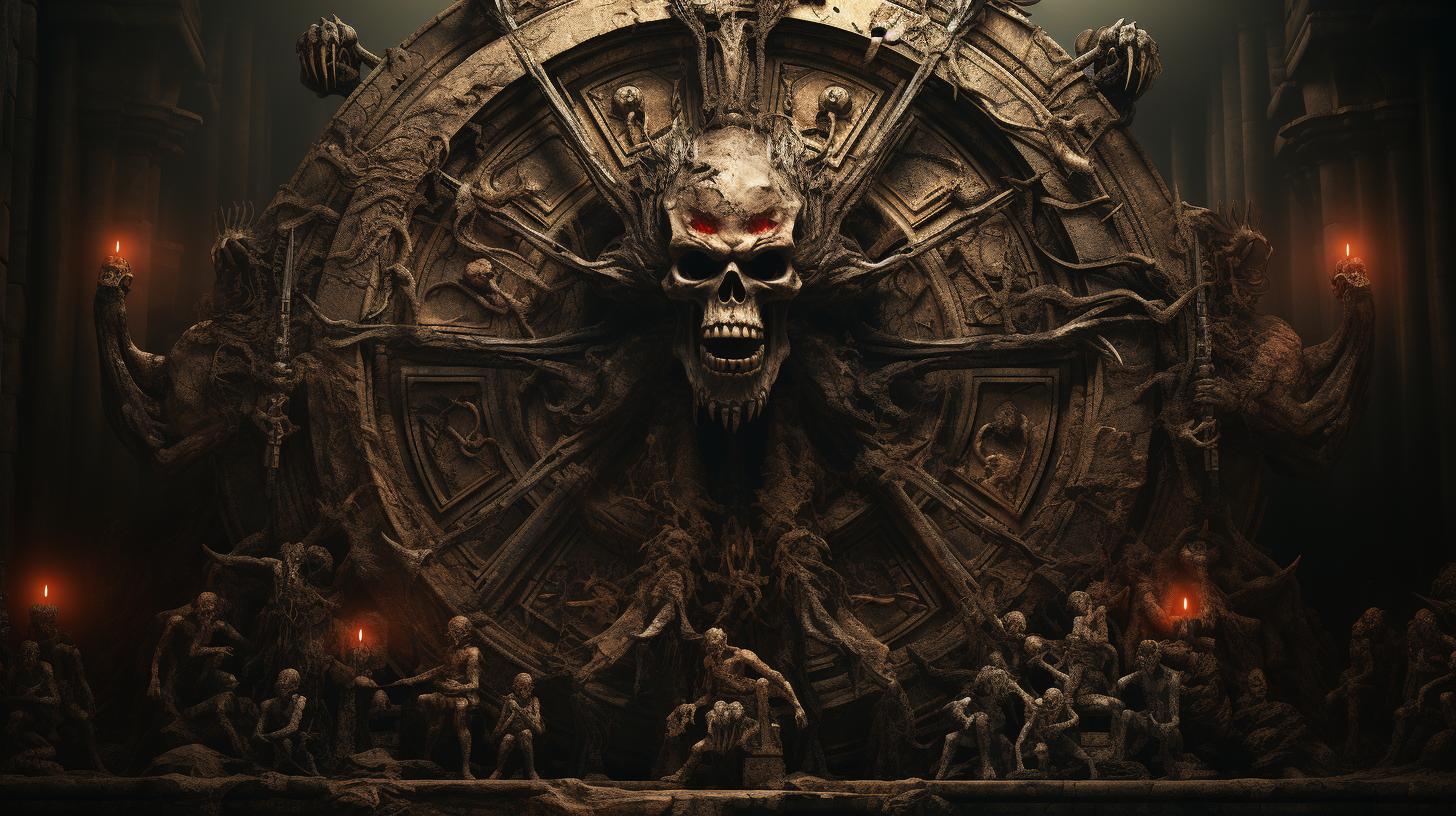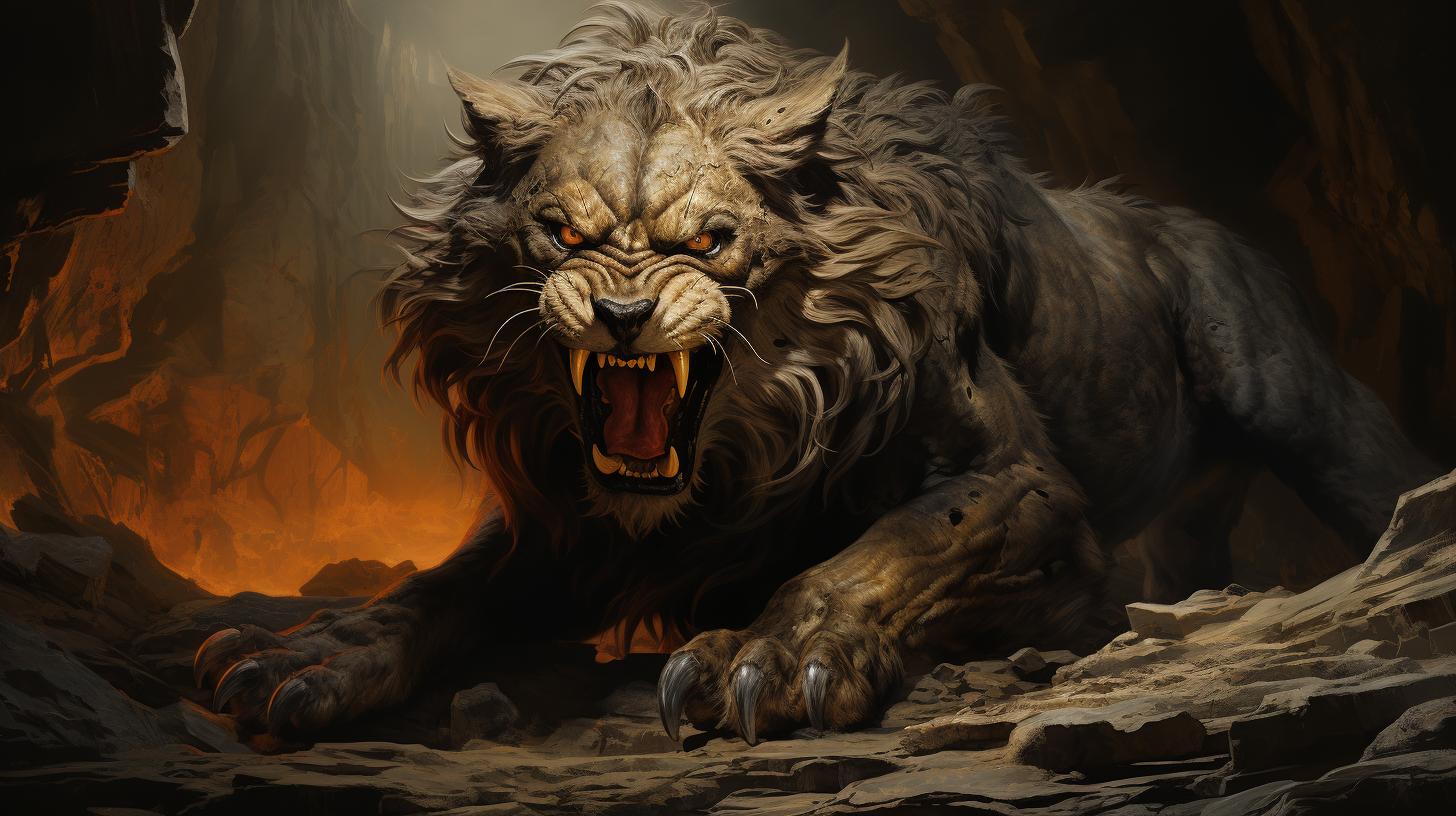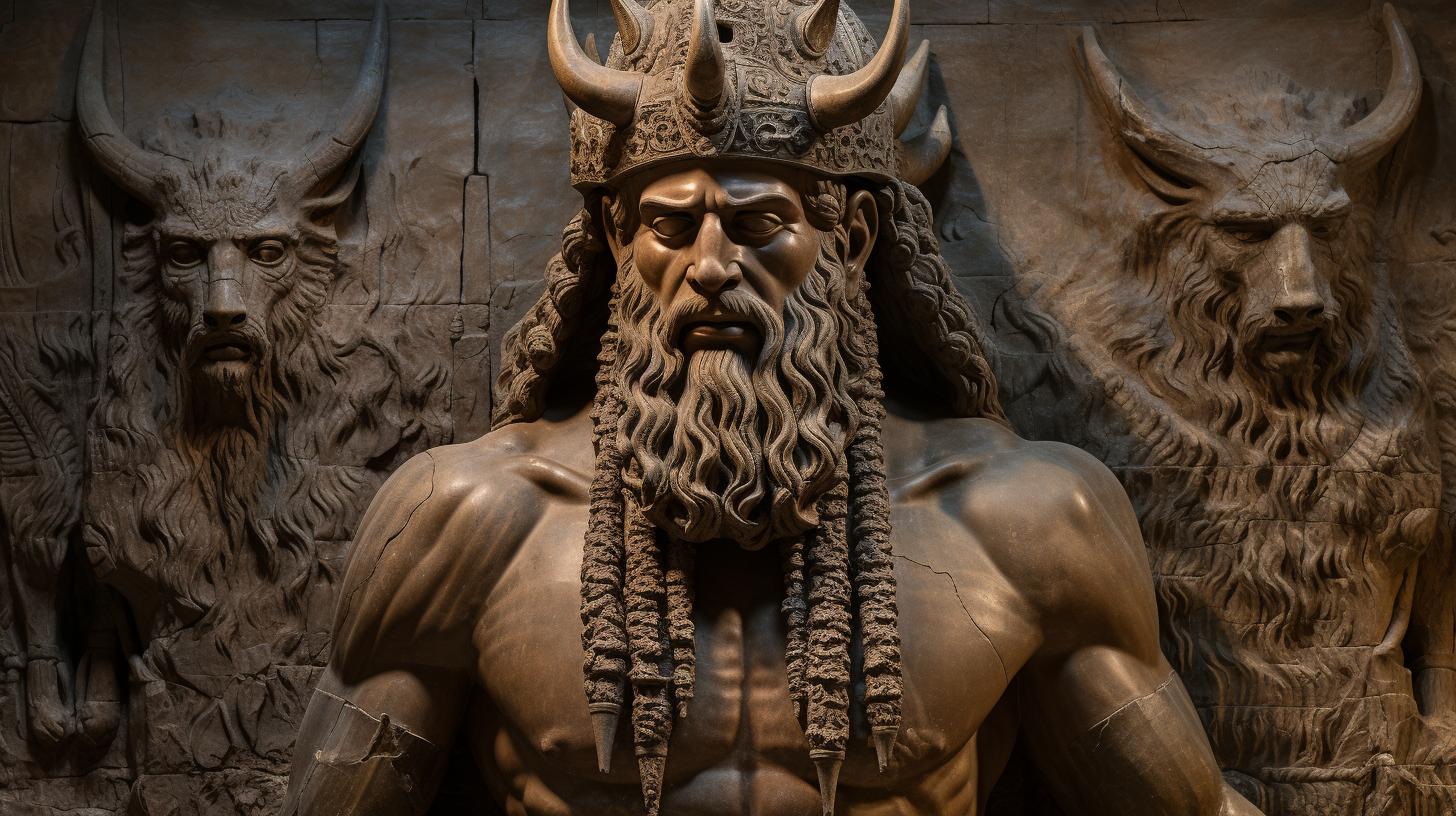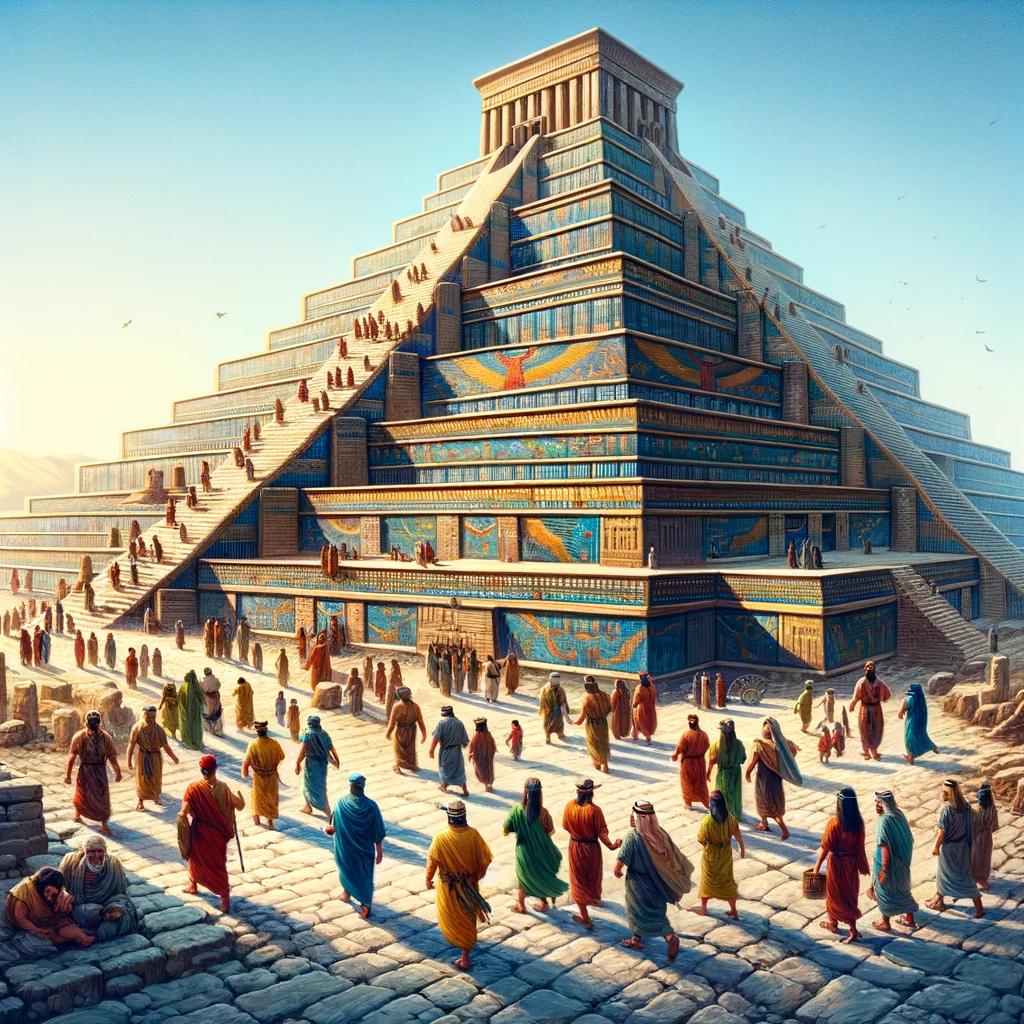Asakku Mythology: Unveiling the Ancient Mesopotamian Demonic Spirits

Asakku mythology is a fascinating aspect of ancient Mesopotamian beliefs. These demonic spirits, classified alongside the benevolent Utukku, were known for their ability to attack and even kill humans through debilitating head fevers.
They are prominently mentioned in poetic enumerations of diseases. Additionally, the influence of Asag, a monstrous demon defeated by the god Ninurta/Ningirsu, is evident in their name. This article will delve into the origins, significance, and connections between Asakku and other demon-like entities, as well as explore the role of Sumerian incantations in understanding Asakku mythology.
Stay tuned for an intriguing journey into the mystical world of Asakku.
Asakku mythology delves into the intriguing realm of ancient Mesopotamian beliefs, shedding light on the existence of malevolent spirits that roamed the land. In this section, we will explore the origins and role of Asakku in Babylonian mythology, examining their significance in the cultural and spiritual context of the time.
Origins and Role of Asakku in Babylonian Mythology
The origins of Asakku mythology can be traced back to the ancient Babylonian civilization, where these demonic spirits held a prominent place in the religious and spiritual beliefs. They were considered malevolent entities with the power to attack and harm humans, particularly through debilitating head fevers.
Asag: The Monstrous Demon and its Defeat by Ninurta/Ningirsu
Within Asakku mythology, the existence of Asag, a monstrous demon, is of significant importance. Asag played a pivotal role in the mythological narrative, as the demon was ultimately defeated by the god Ninurta/Ningirsu, wielding the mystical mace known as Sharur.
This event solidified the triumph of good over evil in the ancient Mesopotamian cosmology.
Connection between Asakku and Utukku: Good vs Evil Spirits
Understanding the connection between Asakku and Utukku is crucial in deciphering the complex interplay between good and evil within Mesopotamian mythology. While Asakku embodied malevolent forces, Utukku represented benevolent spirits.
These opposing entities provided a dichotomous representation of the supernatural world, reflecting the ancient Mesopotamian belief in the eternal struggle between light and darkness.
Exploring Sumerian Incantations: Insights into Asakku Mythology
Delve into the world of ancient Mesopotamian magic as we explore the significance of Sumerian incantations within Babylonian culture.
These powerful spells offer intriguing insights into the mythical creatures known as Asakku and their role in Mesopotamian lore.
Significance of Sumerian Incantations in Babylonian Culture
Sumerian incantations held a crucial place in Babylonian culture, serving as a means to ward off evil spirits, including the malevolent Asakku. These incantations were deeply embedded in the religious practices and magical traditions of the time, showcasing the importance attributed to supernatural intervention.
Different Types and Purposes of Sumerian Incantations
Within the realm of Sumerian incantations, a wide array of types and purposes existed. From protective spells to exorcisms, each incantation targeted and addressed specific supernatural threats, including the Asakku and other demonic entities that plagued ancient Mesopotamian society.
Notable Examples: Incantations against Asakku and Other Demons
- Examine notable examples of Sumerian incantations specifically designed to combat the Asakku. These texts shed light on the methods employed by Mesopotamian priests to keep these malevolent spirits at bay and protect the community from their harmful influences.
- Discover how these incantations not only targeted Asakku but also confronted other menacing demons that posed a threat to the well-being of individuals and society as a whole.
- Explore the unique linguistic structures and repetitive patterns found within these incantations, providing insights into the Mesopotamian view of magic and its connection to the supernatural realm.
Through our exploration of Sumerian incantations, we gain a deeper understanding of the intricate relationship between Asakku mythology, the rituals and beliefs of ancient Mesopotamians, and the protective measures employed to safeguard against these malevolent forces.
Join us as we unravel the secrets of Sumerian incantations and their profound influence on the mythological narratives surrounding Asakku in the fascinating world of ancient Mesopotamia.
Asakku in the Mesopotamian Culture and its Relation to Diseases
In the ancient Mesopotamian culture, demonology played a significant role in explaining the spread of diseases.
It was believed that demons, including Asakku, were closely associated with the winds that brought illnesses, particularly the hot wind that often carried infectious diseases. This belief aligns with concepts of disease, demons, and impurity found in the ancient Near East and biblical texts.
The belief in malevolent spirits, ghosts, and similar powers was also prevalent in ancient Eastern cultures, and the Babylonians sought protection from evil through the secrets of Eden’s history.
Demonology and the Spread of Diseases in Ancient Mesopotamia
Demonology, as a fundamental aspect of ancient Mesopotamian mythology, provided an explanation for the origin and propagation of diseases.
It was believed that demons, like Asakku, were responsible for causing afflictions and inflicting harm upon humans. The association between demons and diseases was closely linked to the belief that illnesses were often spread through the malevolent influences of supernatural beings.
The Role of Asakku in Enumerations of Poetic Diseases
In poetic enumerations of diseases, Asakku is frequently mentioned as a formidable force capable of inflicting harm upon individuals. The inclusion of Asakku in such lyrical compositions reflects the cultural significance attributed to this demonic entity in understanding and contextualizing various ailments and their effects.
These enumerations served not only as poetic expressions but also as a means to categorize and comprehend different illnesses.
Comparative Analysis: Asakku and Other Demonic Entities in Mythology
A comparative analysis of Asakku with other demonic entities in Mesopotamian mythology offers insights into the diverse range of supernatural beings believed to exert influence over human affairs. Comparisons can be drawn between Asakku and entities like Edimmu, showcasing the intricate web of mythical narratives and the varied roles attributed to different demonic creatures.
Exploring these comparisons provides a deeper understanding of the Mesopotamian worldview, its mythological framework, and the complex interplay between divine and malevolent forces.
Unveiling the Mysteries: Investigating the Later Babylonian Texts
Delving deeper into Asakku mythology, an intriguing area of study lies in the examination of the later Babylonian texts.
These texts hold valuable insights into the origins, nature, and significance of Asakku and its connections with other demonic entities. In this section, we will explore the compilation and translation of these texts, shed light on the great series of evil comprising Udug, Utukku, and Asakku, and discuss the challenges and future perspectives in studying these later Babylonian texts.
Compilation and Translation of Later Babylonian Texts on Asakku
The compilation and translation of later Babylonian texts on Asakku have proven to be a crucial endeavor in understanding this enigmatic aspect of Mesopotamian mythology. Scholars have meticulously collected and deciphered these texts, bringing forth valuable information about the beliefs, rituals, and practices associated with Asakku.
Through rigorous analysis and comparison, they have unraveled the hidden meanings embedded within these ancient writings.
The Great Series of Evil: Udug, Utukku, and Asakku
One cannot delve into Asakku mythology without exploring the great series of evil that encompasses not only Asakku but also Udug and Utukku. These malevolent entities share a complex relationship and are interwoven in ancient Mesopotamian cosmology.
By unraveling the intricacies of this interconnected trilogy, scholars have gained deeper insights into the role and significance of Asakku within the broader demonic pantheon.
Challenges and Future Perspectives in Studying Later Babylonian Texts
Studying the later Babylonian texts on Asakku presents its own set of challenges.
These include deciphering complex script and language, contextualizing the material within the cultural and historical framework, and addressing gaps in knowledge. However, despite these obstacles, ongoing research and advancements in the fields of linguistics, archaeology, and cultural studies offer promising avenues for further exploration.
By continuing to unveil the mysteries within these texts, we can continue to deepen our understanding of Asakku mythology and its enduring significance in ancient Mesopotamian culture.
Community Engagement: Interactive Maps and Recent Blog Posts
In this section, we invite you to explore the fascinating world of Sumerian incantations and mythology through our interactive maps.
These maps provide a visual representation of the ancient Mesopotamian landscape, allowing you to trace the origins and spread of Asakku mythology across different regions.
Exploring Sumerian Incantations and Mythology through Interactive Maps
Immerse yourself in the mystical realm of Sumerian incantations and mythology with our interactive maps.
Discover the locations where these ancient texts were discovered, and gain insights into the cultural significance of specific regions in relation to Asakku and other mythical beings. Uncover the stories and rituals that shaped Mesopotamian beliefs through an engaging visual experience.
Engaging with the Community: Recent Blog Posts on Asakku and Related Topics
Stay up-to-date with the latest developments in Asakku mythology and related topics by exploring our collection of recent blog posts. Our expert team delves into various aspects of Asakku folklore, demonology, and the connections between ancient Mesopotamian beliefs and contemporary cultures.
Engage in thought-provoking discussions and expand your knowledge of this captivating subject.
Sharing Insights and Perspectives: Discussions and Contributions from the Community
Join a vibrant community of enthusiasts, scholars, and curious minds who share their insights and perspectives on Asakku mythology. Participate in discussions, share your own research, and contribute to the collective understanding of this ancient Mesopotamian tradition.
Together, we can shed light on the mysteries of Asakku and uncover new layers of meaning within this rich mythological tapestry.
.




















